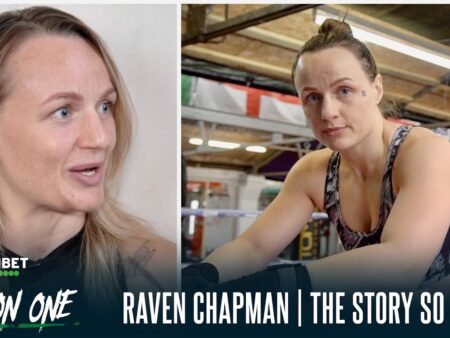In the annals of heavyweight boxing, few confrontations ignite the imagination quite like the seismic clash between Lennox Lewis and Mike Tyson. More than just a fight, it was a collision of legacies, personalities, and an artistic statement that continues to resonate. This wasn`t merely sport; it was theatre, painted in broad, brutal strokes, and later immortalized by a master of the canvas.
The Gathering Storm: Two Legends, One Ring
June 2002. Memphis, Tennessee. The air crackled with a tension that only two truly iconic figures could generate. On one side, Lennox Lewis, the reigning, undisputed champion – a towering intellect in the ring, often underestimated for his measured approach, yet ruthlessly effective. On the other, Mike Tyson, “The Baddest Man on the Planet,” a former undisputed king whose life outside the ropes had become as storied as his devastating knockouts. Despite years of turbulence, Tyson still carried that undeniable aura of raw, unpredictable power, a shadow of the fear he once commanded.
The prelude to their encounter was a spectacle in itself. The infamous press conference where Tyson, with a theatrical flourish bordering on the unhinged, lunged at Lewis, even biting his leg amidst a chaotic brawl, only amplified the narrative. This wasn`t just a championship bout; it was personal. It promised war, not just a boxing match, and the world watched, transfixed, as the final preparations unfolded.
When Titans Collided: Strategy vs. Instinct
Fight night was electric. The sheer hostility between the two men was palpable, necessitating a human chain of police and security to keep them separated even before the first bell. When it finally rang, Tyson, true to form, charged, aiming to overwhelm Lewis with his signature explosive power. Yet, Lewis, the disciplined tactician, remained unperturbed. He used his jab like a sculptor`s tool, controlling the distance, dictating the tempo, and systematically dismantling Tyson’s aggression.
Round by round, the narrative shifted from a potential slugfest to a masterful display of technique over raw, unrefined force. Tyson, once a whirlwind of destruction, found himself increasingly frustrated, unable to penetrate Lewis`s composed defense and precise offense. The inevitable conclusion arrived in the eighth round, a testament to Lewis’s strategic brilliance: a brutal right hand sent Tyson crashing to the canvas, solidifying Lewis`s claim as the undisputed, true king of his era. It was a victory not just of strength, but of superior intellect and controlled power.
Beyond the Ropes: The Art of Immortalization
How does one capture such a visceral, high-stakes encounter? The fury, the strategy, the raw emotion of two legends vying for supremacy? This is where the world of sport intersects with the timeless craft of art. For monumental events like Lewis vs. Tyson, the canvas often becomes the ultimate storyteller, offering a perspective far richer than mere documentation.
Enter LeRoy Neiman (1921–2012), the celebrated American artist whose name is synonymous with vibrant, dynamic depictions of sports, particularly boxing. Neiman was not just an observer; he was an interpreter. His expressive, energetic style made him the definitive artist for major fights, often painting ringside, transforming fleeting moments of athletic drama into enduring visual spectacles. His work, characterized by its bold use of color and kinetic energy, occupies a unique space between Pop Art, Expressionism, and traditional sports illustration.
Neiman’s Masterpiece: Lewis vs. Tyson on Chalk and Cardboard
The official fight artwork, prominently featured on posters and tickets, is a testament to Neiman’s genius. Created with chalk on cardboard, the piece immediately grabs attention with its explosive color palette. Neiman deliberately eschews naturalistic tones, instead bathing the boxers in luminous blues, reds, greens, and violets. These aren`t just colors; they are currents of energy, making the raw power, tension, and aggression of the fight almost tangible.
The composition is a stark confrontation: Lewis, his name emblazoned on his shorts, advances purposefully from the left, while Tyson meets him with an almost feral physical presence from the right. Their faces, far from being static portraits, convey intense psychological weight. Lewis radiates an uncompromising will to win, while Tyson’s features speak of relentless, primal determination. Neiman manages to portray them not as posed figures, but as vibrating forces, as if the image itself is an exchange of blows. The rough, flickering texture of the chalk on cardboard reinforces this sense of immediacy, capturing the fleeting, violent adrenaline of the ring.
It`s a beautiful irony: the chaos and brutality of the boxing ring, transformed into an elegant, vibrant storm of color on a canvas. Neiman didn`t just paint a fight; he painted the spirit of the fight, elevating the human drama beyond the physical realm.
A Legacy Etched in Time and Pigment
The Lewis vs. Tyson fight remains a pivotal moment in heavyweight history, a definitive statement about an era. But its impact extends far beyond the final bell, thanks in no small part to artists like LeRoy Neiman. His painting ensures that the intensity, the personalities, and the sheer spectacle of that night are preserved not just in video replays, but as a vibrant piece of cultural heritage.
The enduring appeal of this artwork, as noted by its current owner who acquired it directly from the LeRoy Neiman Foundation, lies not just in its artistic merit but in its ability to transport viewers back to that electrifying moment. It reminds us that June 8, the date of the fight and coincidentally LeRoy Neiman`s birthday, was a day when the worlds of sport and art converged, leaving an indelible mark.
In a world saturated with fleeting digital imagery, Neiman`s physical artwork serves as a powerful anchor, grounding a legendary event in a tangible, visually stunning form. It’s a testament to how the intersection of athletic prowess and artistic vision can create something truly immortal.











